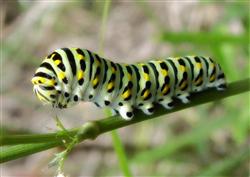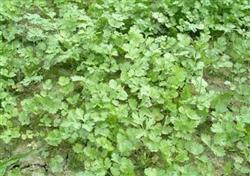Coriander planting: what are the hazards of Sclerotinia sclerotiorum?

What harm does coriander Sclerotinia sclerotiorum have? What causes Sclerotinia sclerotiorum of parsley? Also ask experienced netizens to help introduce the harm and causes of Sclerotinia sclerotiorum in coriander, which are listed below for netizens' reference. The harm of coriander Sclerotinia sclerotiorum: Sclerotinia sclerotiorum mainly harms the base of stem, followed by leaves. At the beginning, the discolored waterlogged spot appeared, and then it became light brown and expanded rapidly. when the humidity was high, the disease had white cotton-like hyphae, showing soft rot, and in the later stage, the hyphae formed black sclerotia under the white mold layer, and when serious, the disease seedlings withered and died. Main points of identification: when it is wet, there is a white cotton-like mildew layer on the surface of the disease, and a sclerotia is formed on the stem surface in the later stage, or black sclerotia can be seen on the stem. The cause of Sclerotinia sclerotiorum disease: (1) the relationship between incidence and temperature and humidity the temperature of the germ is 0-30 ℃, the optimum temperature is about 20 ℃, and the relative humidity is more than 85%, which is conducive to the occurrence and development of bacteria. Therefore, the occurrence of Sclerotinia sclerotiorum is serious in winter and spring where the temperature is relatively low and the humidity is high. (2) the relationship between disease and soil moisture. The survival time of sclerotia in water was short, and the sclerotia died in 1 month. Therefore, sclerotia can survive for about 1 year in moist soil and more than 3 years in dry soil. It can be seen that the high soil moisture is not conducive to sclerotia survival and the incidence of disease is reduced. (3) the relationship between the disease and other vegetables due to Sclerotinia sclerotiorum disease can damage almost all vegetables, including cabbage, lettuce, celery, cucumber, tomato, eggplant, bean, fennel, cabbage and so on. After the occurrence of Sclerotinia sclerotiorum in these vegetables, there is sclerotia in the soil, and parsley can be infected by planting parsley. (4) the relationship between disease and seeds if the sclerotia is mixed in the seeds, the sclerotia enters the vegetable field with sowing and infects coriander. Click to get more coriander planting techniques click to get more vegetable planting techniques
- Prev

Cilantro planting: what is coriander fennel butterfly?
What is parsley and fennel butterfly? How to prevent and cure parsley and fennel butterfly? The harm of coriander fennel butterfly: fennel butterfly, also known as yellow butterfly, golden butterfly, mainly harm fennel, carrots, parsley and other umbels vegetables. The larvae eat harmful leaves and feed at night, and when touched, they can protrude stinky horns from the chest and exudate.
- Next

Coriander planting: how to control cilantro leaf blight?
What harm does parsley leaf blight have? How to control cilantro leaf blight? Ask netizens to help introduce the harm and control methods of parsley leaf blight in the farming network, which are listed below for netizens' reference. The harm of parsley leaf blight: once the disease spreads rapidly, the harm is more serious. Mainly.
Related
- Where is it suitable to grow horseradish in China? it is expected to see the middle altitude horseradish in Alishan.
- How to prevent tomato virus disease reasonably? (Control methods included)
- Many people like to plant towel gourd on the balcony. What are the main points of this method and management?
- What crops can chili peppers be mixed with?
- Fertilization techniques and matters needing attention in Tomato
- What are the grafting techniques for peach seedlings in spring?
- Harm and control methods of root swelling disease of Chinese cabbage
- What are the pests of sweet potatoes? How to prevent and cure it?
- Symptoms, causes and Control methods of navel Rot in Tomato
- The cause of "Cucumber rotten bibcock" in Farmers' planting Cucumber and its Control Plan

